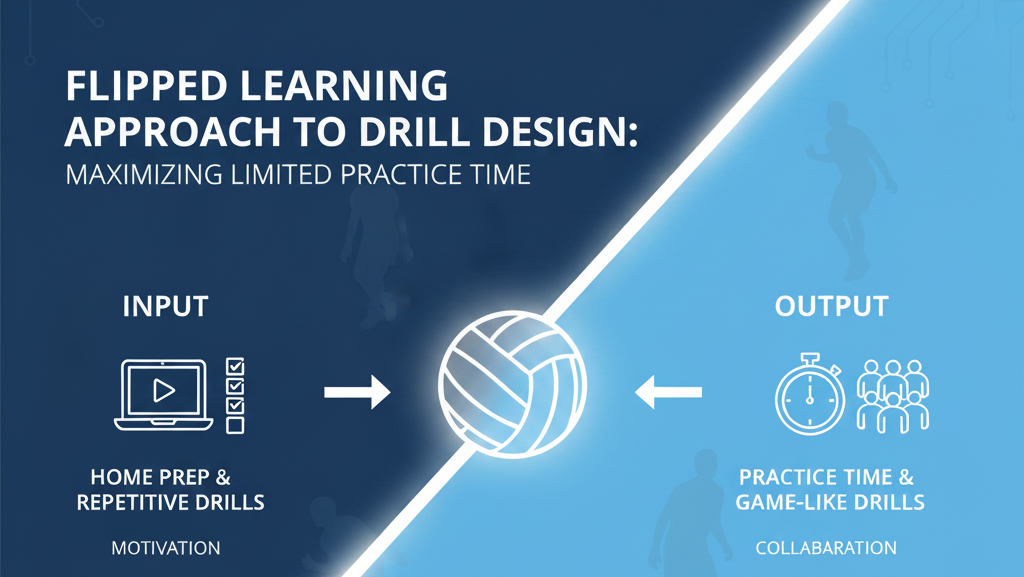Two practice days per week. Two hours per session.
How can we maximize the effectiveness of just four hours of weekly practice?
This challenge faces every coach. While contemplating this problem, I recalled the concept of “flipped learning.” Could this educational approach be adapted to sports training environments?
What is Flipped Learning?
Let me reference a definition from Benesse Corporation, a major educational company:
“Traditional classes typically involve teachers delivering lectures from the podium, followed by homework assignments for review. Flipped learning literally ‘flips’ this conventional format. Students receive instruction at home through video materials as preparation, while classroom time is dedicated to exercises and discussions typically assigned as homework. In essence, the locations of learning input and output are completely reversed. This approach began in the United States in the 2000s and has gained attention in Japan, with institutions like the University of Tokyo beginning trials.”
The key insight lies in “completely reversing the locations of learning input and output.“
The Relationship Between “Repetitive Drills = Input” and “Game-Like Drills = Output”
Let me explore the relationship between input and output in sports contexts.
When applied to sports training, “input” corresponds to repetitive drills, while “output” relates to game-like drills.
In a previous article (Between Repetitive and Game-Like Drills: A Coach’s Dilemma), I discussed how the relationship between these drill types resembles the “chicken or egg” dilemma. Both types are essential for player development.
However, attempting to incorporate sufficient amounts of both drill types within four weekly hours presents obvious practical limitations.
Applying Flipped Learning Concepts
This is where flipped learning principles become valuable.
Repetitive drills (input), which players can practice individually to some extent, become largely self-directed responsibilities.
Game-like drills (output), which require multiple players and simulate actual game conditions, receive maximum allocation within the four-hour practice schedule.
This flipped learning approach to drill design could maximize the effectiveness of limited practice time.
Player Motivation as the Key Factor
The critical element here is ensuring input quality.
Output cannot exist without input.
If most practice time focuses on output activities, input quality assurance becomes each player’s individual responsibility. This necessarily increases reliance on player motivation to improve.
Volleyball requires relatively extensive time to develop minimum technical competencies for game participation compared to other sports. While completely delegating input development to individual players seems inappropriate, the ideal scenario involves players engaging in repetitive drills through intrinsic motivation and high personal drive for improvement.
Rather than completely entrusting input quality to individual players, coaches must consciously focus on cultivating players’ intrinsic motivation for continuous growth and development.
Practical Implementation Strategies
This flipped approach requires careful structural considerations for youth volleyball development.
Input Accountability Systems:
- Skill Checklists: Provide clear technical standards players can self-assess
- Video Resources: Create instructional content players can access independently
- Progress Tracking: Implement systems where players document individual skill development
Output Optimization:
- High-Intensity Game Situations: Design complex scenarios that require multiple technical skills
- Decision-Making Focus: Emphasize tactical awareness and quick problem-solving
- Collaborative Learning: Structure activities where stronger players mentor developing teammates
Motivation Cultivation:
- Goal Setting: Help players establish personal development objectives
- Achievement Recognition: Celebrate individual progress alongside team success
- Autonomy Support: Gradually increase player responsibility for their development
This approach shifts the coaching role from direct instruction to facilitation of learning environments where motivated players can maximize their potential within time constraints.
Keywords: flipped learning volleyball, practice time optimization, self-directed volleyball training, input-output drill balance, intrinsic motivation coaching, independent skill development, volleyball pedagogy innovation


